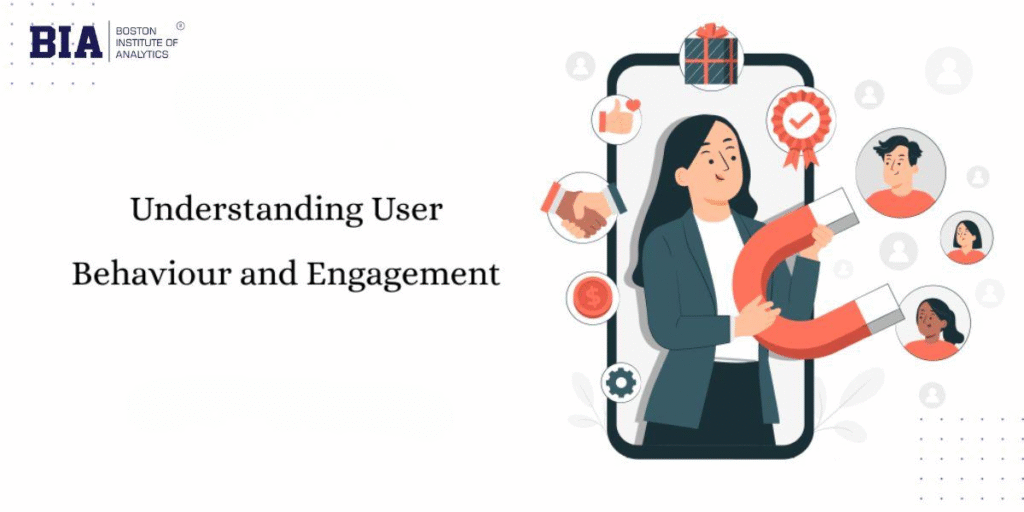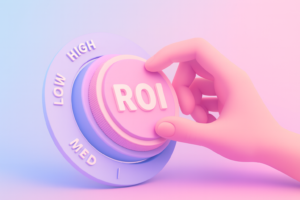When considering paid ad campaigns, two immediately come to mind: Facebook Ads and Instagram Ads.
They belong to Meta, meaning both platforms share the same advertising and marketing platform and tools, etc.
The issue is that just because the backend is the same, it doesn’t mean it works the same way for all businesses.
Where you actually spend your budget depends on who your audience is, what type of content you create, and what results you’re trying to obtain.
Let’s break it down step by step.
Understanding the Basics
Suppose you’re interested in taking a Digital Marketing Course. In that case, you will see that one of the first things any professional marketer will understand is the differences between Facebook and Instagram advertising.
Beforehand, headlong into which platform is “better,” it helps to know how these ads essentially work.
- Facebook Ads originated in 2007, and they gave advertisers new ways to target users based on demographics, interests, and behaviour. Often referred to as the original player in the paid social arena.
- Instagram Ads launched much later, in 2015, but enjoyed immediate traction due to the highly visual, mobile-first experience provided by the platform.
Both types of advertising leverage Meta Ads Manager, which allows advertisers to create, manage, and track campaigns from one dashboard, but the user experience is very different between the platforms, and therefore, ad performance is impacted.
Audience Demographics
Here’s the thing: your ads are only as effective as the audience they reach.
- Facebook: People of all ages use the platform, but it is primarily used and targeted at people ages 25-54. Therefore, if your target customers are professionals, parents, or purchasing decision-makers, it is the ideal platform for you. Additionally, Facebook is well adopted in less developed economies, making it an ideal platform for your global campaigns.
- Instagram: Instagram skews younger. Approximately two-thirds of users are under the age of 34, and a significant number of users fall into the 18-24 age group. If you sell fashion, fitness, tech gadgets, or lifestyle-related products, Instagram usually outperforms Facebook because this age group usually spends time around that app.
In a Digital Marketing Course, you will compare the demographics of users to your customer personas.
If your buyer persona and the user demographics of the app do not align, you will not achieve fantastic results.
Ad Formats and Creative Options
Both platforms offer a variety of arrangements: stories, carousels, video ads, and gathering ads, but how they demonstration up in feeds differs.
- Facebook Ads: You will see placements throughout News Feed, right column, Marketplace, Messenger, and in Facebook groups. It offers a lot of flexibility, especially if you run a business that follows a B2B or service model where you want more text and links alongside visuals.
- Instagram Ads: These ads blend into Stories and the Explore tab so you can have an immersive and engaging experience. The ad relies on visual imagery in case you have strong photography, video, or design capabilities that your business can produce.
If you favour brand storytelling versus detailed description, events, or lead forms, Instagram may be ideal. If you want longer descriptions, lead forms, and event promotion, then Facebook may be better suited.

Engagement and User Behaviour
Let’s talk about how users behave.
On Facebook, users scroll to see what’s happening in the news, community posts, and updates from family and friends. Users might stop to read a longer caption or visit the event page.
Users engage with Facebook content primarily through clicks, comments, and shares.
On Instagram, users tend to be more visually driven and quickly react – like, tap through stories, swipe, and follow.
Therefore, users are less likely to click links (because Instagram just allows links on ads and bios), but they do engage strongly with the content itself.
If your goal is to drive traffic to your website, Facebook typically has superior data compared to Instagram.
If your goal is brand awareness and engagement, you’ll usually do better on Instagram.
Cost and ROI
The big question: where do you get better returns?
Facebook Ads usually have a lower CPC (cost per click) because of their enhanced number of placement options and tendency to drive high levels of traffic. This is great for businesses on a budget and/or running a lead generation campaign.
Instagram Ads will generally enjoy higher engagement rates, but will come at a higher rate of cost per impression. Even still, if your creative is solid and targeted to Instagram’s younger audience, ROI will be impressive in visibility and conversions.
In digital marketing coursework, you will often run simulated experiments that compare CPC, CPM (cost per thousand impressions), and a conversion metric on both platforms against each other.
What you will learn: there is no one right answer – it is about testing and optimizing for your unique audience.
Business Goals and Industry Fit
The platform you choose should align with your business objectives.
- B2B companies: Facebook often works better because it offers advanced targeting for job titles, industries, and behaviours.
- E-commerce brands: Instagram is fantastic for showcasing products visually. Features like shoppable posts and Instagram Shops integrate seamlessly with ads.
- Local businesses: Both work, but Facebook’s local awareness ads and event promotion tools give it an edge.
- Personal brands or influencers: Instagram is usually the winner, thanks to its focus on lifestyle and visual storytelling.

Learning Through Experimentation
Here’s what most people overlook: there is no need to pick one platform over the other.
A smarter way to proceed is to test ads on both platforms and review the performance data.
- Run A/B tests.
- Try different creative videos, carousels, reels, and static images.
- Compare conversions across audiences.
If you are a student in a Digital Marketing Course, this practical testing is precisely what gets you ready to work on real-world campaigns. No amount of theory beats the real-world value of learning by doing.
Why Understanding Both Matters for Digital Marketers?
Whether you are an established business owner or are looking to venture into the world of marketing, you may be thinking that it would be easier if you just focused on one platform.
What’s the problem with that approach? Facebook and Instagram are not competitors, they work together.
And because they are both through Meta Ads Manager, you can reach users on both platforms with a campaign.
This saves time and provides analytics that help you determine where your audience is engaging and responding.
A Digital Marketing Course equips you with strategies to:
- Define campaign goals.
- Select the right audience targeting.
- Optimize ad placements.
- Analyze data to refine campaigns.
With this assistance, you’ll learn to build multi-platform approaches instead of betting all your money on a on its own channel.
Case Example: Small Business vs. Lifestyle Brand
Let’s say you own a local tutoring centre with the goal of generating leads.
Facebook Ads that target parents aged 30 to 45 in your area, with a strong call-to-action for free trial classes, will probably perform better than Instagram ads.
Parents are more active on Facebook and are also better at engaging with longer/formal posts that contain links.
Now, let’s say you are starting a clothing start-up that is targeting Gen Z. Instagram Ads that have reels, influencer collaborations, and shoppable posts will beat Facebook because the audience is younger and is inspired by visuals.
Both these scenarios are targeted and effective, but context requires you to change your strategies. That is the takeaway here!
The Role of Content Quality
Another element that often isn’t considered is the quality of the content. No ad plan will work if the creative is not attention-getting.
- On Facebook, strong copy paired with an engaging image or video drives clicks.
- On Instagram, eye-catching visuals paired with concise captions spark engagement.
This is why many Digital Marketing Courses teach not only ad strategy but content creation, storytelling, and design.
Final Thoughts
Facebook ads vs. Instagram ads – what is the most effective channel for your business? The short answer depends on your target audience, your objectives, and your content.
- If you’re targeting an older demographic, focusing on lead generation, or promoting events, Facebook Ads will likely deliver better results.
- If your brand skews younger, relies on visuals, or thrives on engagement and lifestyle storytelling, Instagram Ads may outperform.
The smartest businesses don’t pick one or another, they think strategically about how to leverage both to test, measure, and adjust along the way.
The bottom line is, instead of asking “which is better?” ask “which is better at this moment for my business?“.
If you want to learn the skills to be confident in making that decision, investing in a Digital Marketing Course is one of the best things you can do for your career.
At the end of the day, platforms will change. Algorithms will change. If you learn the principles of digital marketing, you’ll have an advantage.









